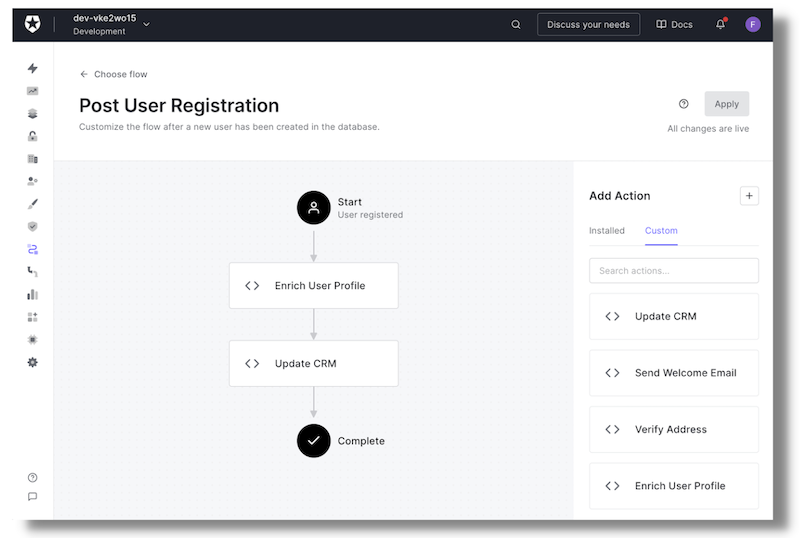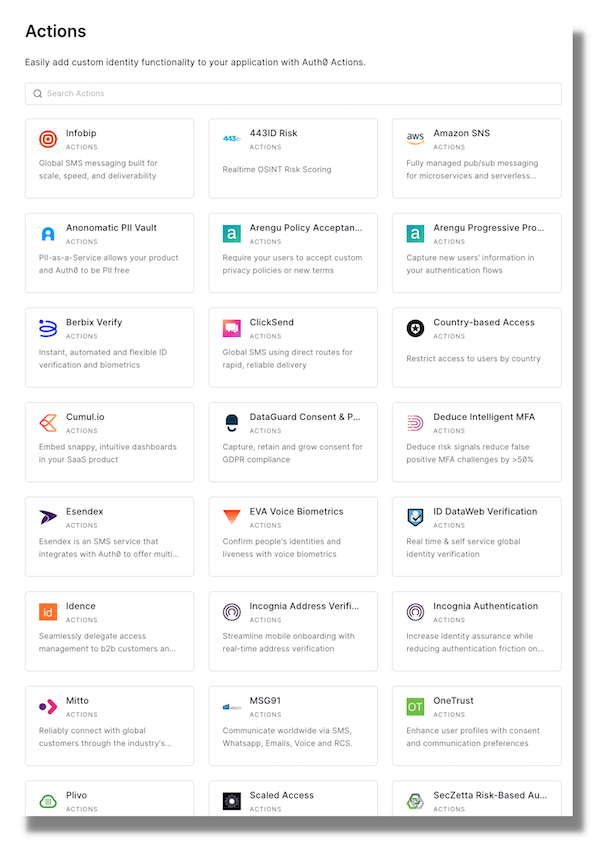Good marketing hinges on communicating the usefulness of your product. That means knowing who your customers are and how they'll use your product.
But you can't tell your customers apart if they are all just a name attached to an email address. You have no idea what they need from your product, where they work, or who they are. If your company hosts videos for businesses, HR will use the product differently than developers. So why would you market to them the same way?
Profile enrichment and progressive profiling are two ways you can build a robust view of your customers to differentiate them. This will allow you to boost your marketing and sales techniques by appealing to who your customers are, and how they want to use your product.
Progressive Profiling
Progressive profiling is a great technique for getting more information from your customers. Instead of asking your users a million questions when they sign up, you ask them a few questions each time they log in.
Think of it as making a little small talk with them every so often when they log on, rather than asking for a three-hour long conversation the first time you meet. So, when you ask questions progressively, you can get needed information without adding a lot of friction to your sign-up process (consider that 86% of customers say that they will leave a website if the sign-up form is too long!).
For example, the first time someone logs in, you might ask for:
- Their name
- Their email address
- Their password
During their second login, or at purchase, you might ask for:
- Their address
- Their birthday
- Their phone number
On the third login, follow up by asking for:
- Their company
- How many people work for them
- Their industry
You can set up and customize a progressive profiling strategy with Auth0. You can put in any questions in any order you want.
While progressive profiling is certainly a useful tool, you aren't going to get to ask users every single thing you want to know, no matter how many logins you spread it out over. When you want demographic data, that's when you turn to the raw power of profile enrichment.
Profile Enrichment
There is a lot of information out there about your users that your sales and marketing teams are probably itching to get their hands on. But just as you can't ask someone for all of it, nobody in your company is going to sit down and manually look up pieces of information to add to every profile, either. It's simply not possible.
That's where profile enrichment comes in.
Profile enrichment is when you automatically grab publicly available information and add it to a user's profile. You do this by integrating 3rd-party demographic data APIs into your application using Auth0 Actions. Actions are snippets of code that run at specific events in the identity workflow, such as when the user logs in or signs up for an account.
For enrichment, your Action would trigger an API that grabs the data for you, and then deposit that information into the profile that every user gets when they sign up through Auth0.

Let's say you wanted to enrich the profiles of your users beyond the basic information they provided when they signed up for their accounts. You could use an Action that triggers immediately after a user signs up for an account that connects to business-centered data APIs to gather additional demographic information about them: where they work, their role, how many people are in their company, and their work-related social media accounts. The Action would then add this information to the user’s profile.
Now you know how many employees their company has, where they're located, and what their job title is — all without forcing users to fill out a sign up-form.

There are a number of pre-built Actions available in Auth0’s Marketplace, and you or your development team can build your own custom actions with Auth0’s built-in development environment and insert them into the appropriate point of the identity flow using our drag-and-drop no-code identity flow management interface.
Marketing with Your Enriched Profiles
Keeping more information on your users turns them from a single datapoint into an actual human that you can connect with as more than just a generic customer. Your marketing and sales teams have plenty of options as to what to do with all the information that transforms users into people.
- Personalize your emails. From birthday offers to targeted onboarding, sending something other than another sales-y email will pay off. According to MailChimp, segmented email campaigns see about a 15% higher open rate across the board when compared to non-segmented email campaigns. So whether you're sending tips specifically to customer success reps or alerting your enterprise liaisons to new features in their plan, using segmented campaigns will help you reach customers.
- Boost your conversions. Let's say someone signed up for your free trial. Of course, you grabbed their email, worked your API magic, and came back with information on their company and position there. Now that you know they work for a mid-sized PR company, you can help your marketing and sales people connect with that user to help them realize the value of your product in the PR space. If they connect with questions, you can point them right to the things that matter most to PR people.
- Customize your marketing campaigns. When you have demographic data on users, you can translate that into better marketing campaigns. Maybe you find that 25% of users are startups with fewer than 30 people, or that the majority of your enterprise customers generate reports on a weekly basis. Or maybe you find that teen boys in cities use your app more than any other group. Any of these pieces of information can help you shape marketing campaigns that speak directly to the interests of those groups.
Aside: Power Your Profiles with CIAM
Before you can build more detailed profiles of your customers, you need a way to give them secure access to your services, as well as govern, collect, analyze, and securely store that customer data. That’s what CIAM — Customer Identity and Access Management — is for.
CIAM sits at the intersection of security, customer experience, and analytics. Providing an easy, frictionless way for users to onboard and log in is critical for driving conversions and building customer loyalty. Protecting sensitive data from malicious intrusion and taking steps to prevent data breaches is central to a sound security policy and compliance with data privacy laws. And compiling user data into a single source of truth is essential to understanding your customers.
CIAM has an increasingly central role in how companies create their digital identities and manage their customer relationships. Companies are allocating more resources to their access management solutions, either from day one or as part of a larger digital transformation.
Visit our CIAM page to find out more about how it can improve your customers’ experience while ensuring security. It’s packed with articles, reports, white papers, and everything you need to know about Customer Identity and Access Management.
Conclusion
To market effectively, you need to understand both your product and your customers. Understanding your product is the easy part — you spend every day with it. But getting to know your customers is a unique challenge.
Yes, you can do focus groups and send out surveys, but neither of those will reach every single customer. When you institute progressive profiling and profile enrichment, you're guaranteed a window into every customer's identity. From there, it's a matter of putting that information to use so you can knock your marketing out of the park.








